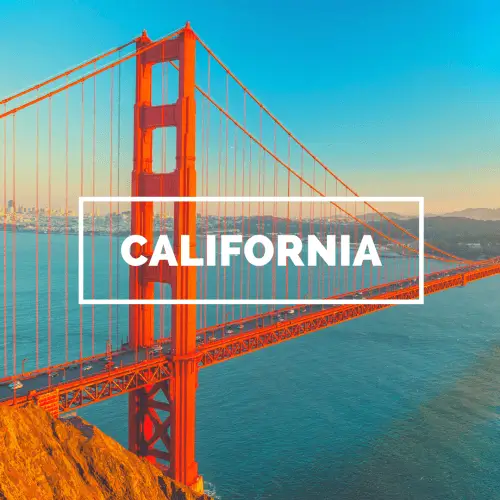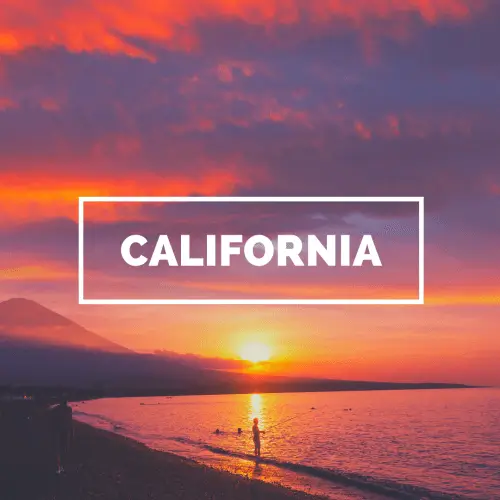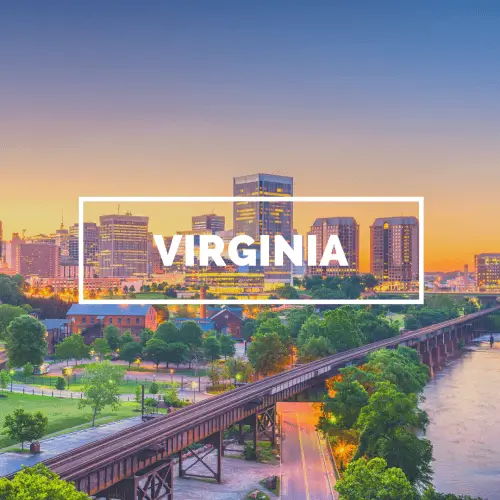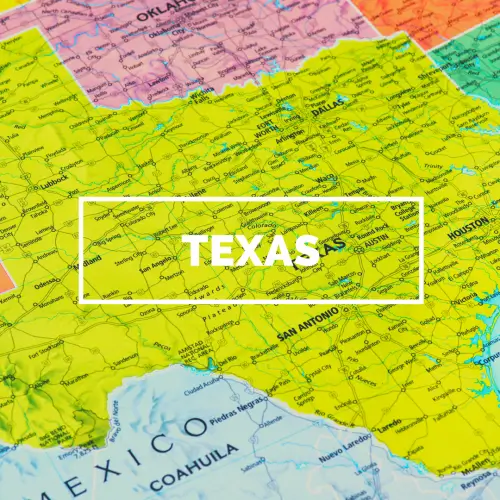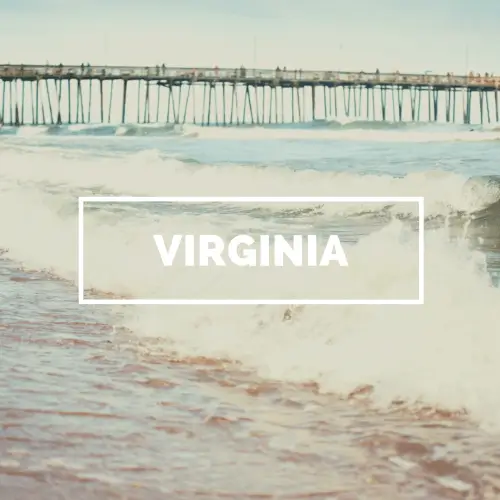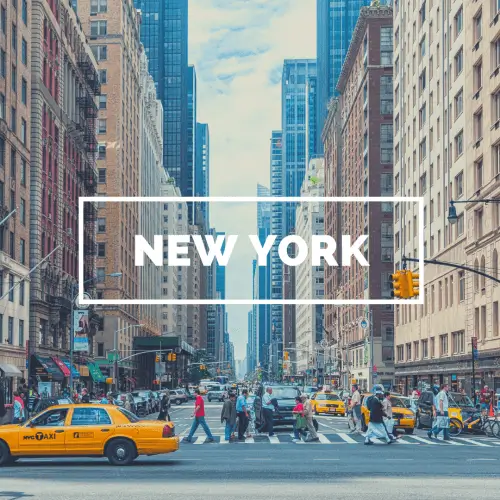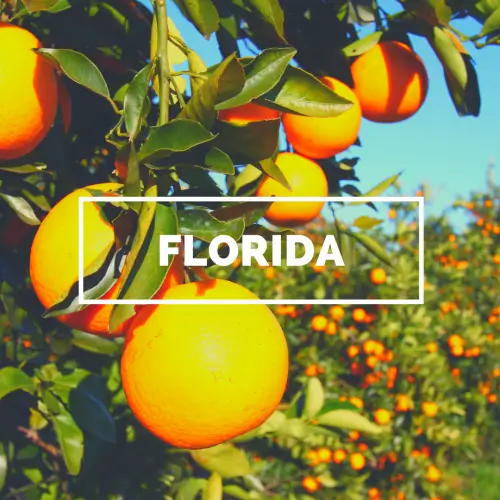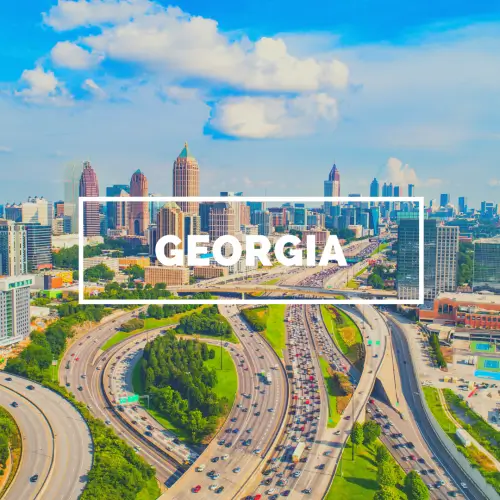Everything You Need to Know for an Easy Move to Puerto Rico

Lila Claybourne
Aug 30, 2024

Puerto Rico – A Paradise with Endless Opportunities
Puerto Rico offers a unique blend of tropical beauty, rich culture, and economic incentives that make it an increasingly popular destination for U.S. citizens looking to relocate. With its picturesque landscapes, welcoming communities, and significant tax benefits, moving to Puerto Rico presents a rare opportunity to enjoy an island lifestyle while maintaining ties to the conveniences of the mainland United States. This comprehensive guide will walk you through every aspect of your move, ensuring a smooth and successful transition to your new life in paradise.
1. Understanding the Basics: Why Move to Puerto Rico?
Economic Advantages:
One of the most compelling reasons to move to Puerto Rico is the island's unique economic benefits, particularly the tax incentives under Acts 20 and 22, now integrated into the newly enacted Act 60. These incentives offer substantial tax breaks for businesses and individuals who qualify, including a 4% corporate tax rate and 100% tax exemptions on dividends, interest, and capital gains for residents. These benefits have attracted many entrepreneurs, investors, and remote workers to the island, transforming Puerto Rico into an emerging hub for business and innovation.
Moreover, the cost of living in Puerto Rico is generally lower than in many U.S. cities. For example, consumer prices, including rent, are about 25-30% lower in Puerto Rico compared to New York City. Groceries, dining out, and entertainment costs are also more affordable, allowing residents to enjoy a high quality of life at a reduced expense.
Cultural and Lifestyle Appeal:
Puerto Rico is a vibrant tapestry of cultures, influenced by its Spanish, African, and indigenous Taíno heritage. This rich cultural blend is evident in the island's music, dance, festivals, and cuisine. From the lively salsa rhythms and colorful celebrations like La Fiesta de San Sebastián to the delicious local dishes such as mofongo and lechón asado, Puerto Rico offers a lifestyle full of flavor and festivity.
The island's natural beauty is another major draw. With over 270 miles of coastline, Puerto Rico boasts some of the most beautiful beaches in the Caribbean, ideal for surfing, snorkeling, and relaxation. Additionally, Puerto Rico is home to El Yunque, the only tropical rainforest in the U.S. National Forest System, offering hiking trails and waterfalls that attract nature enthusiasts from around the world.
Access to U.S. Amenities:
As a U.S. territory, Puerto Rico offers the convenience of living in a familiar legal and financial system while enjoying the perks of island life. U.S. citizens do not need a passport to move to Puerto Rico, and the island uses the U.S. Dollar as its currency, simplifying financial transactions. Furthermore, Puerto Rico's legal system is based on U.S. laws, and federal programs such as Social Security and Medicare are available to residents, making the transition smoother for those moving from the mainland.
2. Preparing for the Move: Legal and Financial Considerations
Residency Requirements:
Establishing residency in Puerto Rico involves more than just relocating; it requires a commitment to making the island your primary home. To qualify as a resident for tax purposes, you must spend at least 183 days in Puerto Rico each calendar year. Additionally, you’ll need to demonstrate that Puerto Rico is your primary place of residence by obtaining a local driver’s license, registering to vote, and filing a local income tax return.
To avoid complications, it’s advisable to consult with a tax professional who understands both U.S. and Puerto Rican tax laws. Establishing your residency correctly is crucial for taking full advantage of the tax benefits offered under Puerto Rico's laws.
Tax Implications:
Puerto Rico's tax incentives are a major attraction for those moving to the island. Act 60, which consolidated previous tax incentives, offers significant tax reductions for qualifying businesses and individuals. For example, under the Act 60 Individual Resident Investor Incentive, qualifying residents can benefit from a 0% tax rate on dividends, interest, and capital gains, compared to the much higher rates on the mainland.
However, while these tax incentives are highly beneficial, they come with specific requirements that must be met to maintain eligibility. For instance, you need to make a bona fide move to Puerto Rico and maintain residency there. Additionally, you must file an annual report and comply with ongoing residency and business operation requirements. It’s important to thoroughly understand these conditions to ensure compliance and maximize your tax benefits.
Healthcare and Insurance:
Healthcare in Puerto Rico is a mix of public and private providers, with the quality of care varying across the island. While San Juan and other larger cities have hospitals and clinics with modern facilities, rural areas may have more limited access to healthcare services. Many healthcare professionals in Puerto Rico are bilingual, which can be a comfort to those who speak English.
Health insurance is available through both local providers and U.S. insurance companies that extend coverage to Puerto Rico. The average cost of health insurance in Puerto Rico can be lower than on the mainland, though it varies depending on the level of coverage and the provider. It’s advisable to compare plans and choose one that covers the medical facilities you plan to use.
3. Cost of Living: What to Expect
Housing Costs:
Housing costs in Puerto Rico vary widely depending on location and property type. In San Juan, the capital and largest city, the average monthly rent for a one-bedroom apartment in the city center is approximately $1,000 to $1,500. In comparison, rent for a similar apartment outside the city center can be around $700 to $1,000. Buying property in Puerto Rico can also be relatively affordable, with prices per square foot significantly lower than in many U.S. cities. For instance, a mid-range apartment in San Juan might cost around $200 to $300 per square foot, while prices in less urbanized areas can be even lower.
Utilities and Everyday Expenses:
Utilities in Puerto Rico, especially electricity, are more expensive than in many parts of the mainland U.S., largely due to the island's reliance on imported fuel for power generation. The average monthly cost for electricity can range from $150 to $300, depending on the size of your home and usage. Water and internet costs are generally comparable to mainland rates, with water averaging $40 to $60 per month and high-speed internet ranging from $60 to $100 per month.
Grocery prices are slightly higher than the U.S. average, mainly due to the cost of importing goods to the island. However, local produce and products are often more affordable, and shopping at farmers' markets can help reduce your grocery bill. Dining out is generally less expensive than in major U.S. cities, with a meal at a mid-range restaurant costing around $10 to $15 per person.
Comparison to Mainland U.S.:
Overall, the cost of living in Puerto Rico is lower than in many U.S. cities, particularly in terms of housing and dining. However, it’s important to budget for higher utility costs and the potential for higher prices on imported goods. For example, while the overall cost of living is about 20% lower than in Miami, utilities and some consumer goods may cost more in Puerto Rico.
4. Finding a Place to Live: Housing and Neighborhoods
Popular Neighborhoods:
Puerto Rico offers a wide range of neighborhoods, each with its own character and appeal. San Juan, the island's capital, is a bustling city with diverse districts. Old San Juan is known for its historic charm, with cobblestone streets and colonial architecture, while Condado is a more modern area with luxury apartments and vibrant nightlife. For those seeking a quieter lifestyle, the southern city of Ponce offers a slower pace and a rich cultural heritage, while Rincon on the western coast is famous for its surfing beaches and laid-back atmosphere.
If you prefer a more rural setting, towns like Dorado and Fajardo offer beautiful beachfront properties and a more relaxed lifestyle. Each area has its own unique advantages, so it’s important to explore different neighborhoods to find the one that best fits your lifestyle and needs.
Renting vs. Buying:
Whether to rent or buy in Puerto Rico depends on your long-term plans and financial situation. Renting can offer flexibility, especially if you're still exploring different areas of the island. However, buying property can be a sound investment, particularly in popular tourist destinations or growing areas like Dorado or Palmas del Mar.
The real estate market in Puerto Rico is diverse, with opportunities ranging from affordable condos to luxury villas. When buying property, it’s important to work with a local real estate agent who understands the market and can guide you through the legal and financial aspects of purchasing a home in Puerto Rico.
Understanding the Real Estate Market:
Puerto Rico’s real estate market has been steadily growing, driven by both local demand and an influx of mainland-fleeing residents attracted by the island’s tax incentives. Property prices are generally lower than in many parts of the U.S., but they can vary widely depending on location, property type, and proximity to amenities. For instance, beachfront properties in areas like Condado or Dorado tend to command higher prices, while properties in more rural or inland areas can be much more affordable.
It’s also important to be aware of property taxes, which in Puerto Rico are generally lower than on the mainland. The average property tax rate is around 0.2% to 0.5% of the property's value, depending on the municipality. However, buyers should also consider other costs, such as closing costs and homeowner's association fees, which can add to the overall cost of purchasing a property.
5. Moving Your Belongings: Shipping and Logistics
Shipping Options:
When moving to Puerto Rico, you’ll need to decide how to ship your belongings. Full-container shipping is ideal for large moves, offering the convenience of having all your items shipped together in a secure container. This option typically costs between $5,000 and $10,000, depending on the volume of goods and the port of origin. For smaller moves, partial container shipping allows you to share container space with other shippers, reducing costs.
Several shipping companies specialize in moves to Puerto Rico, providing services that include packing, loading, and delivery. It's important to compare quotes from different providers and consider factors like transit time, insurance coverage, and customer reviews to choose the best option for your needs.
Car Shipping:
Shipping your car to Puerto Rico is a common and relatively straightforward process. On average, shipping a car from the mainland U.S. to Puerto Rico costs between $1,000 and $2,000, depending on factors like the size of the vehicle, the port of origin, and the time of year. The process typically takes one to three weeks, and your car will be delivered to a designated port in Puerto Rico, such as San Juan or Ponce.
What to Bring and What to Leave Behind:
Deciding what to bring to Puerto Rico can be challenging, especially if you’re moving from a large home or have many possessions. It's important to consider the island’s climate and availability of goods when making your decision. For instance, heavy winter clothing may not be necessary, and certain appliances or electronics that are costly to ship might be better purchased locally.
Furniture, kitchenware, and personal items are commonly shipped, but it's worth noting that some items, such as large appliances or older vehicles, may not be well-suited to the island’s tropical environment. In some cases, it may be more economical to sell these items before your move and purchase new ones after you arrive.
6. Adjusting to Life in Puerto Rico
Language and Communication:
While English is widely spoken in tourist areas and by professionals, Spanish is the predominant language in Puerto Rico. Learning Spanish, even at a basic level, will significantly enhance your experience and help you integrate into the local community. Many Puerto Ricans are bilingual, but speaking Spanish will allow you to navigate daily interactions more smoothly and build stronger connections with locals.
Language classes are widely available in Puerto Rico, and there are numerous online resources to help you learn Spanish. Immersing yourself in the language through everyday interactions, such as shopping at local markets or conversing with neighbors, can also accelerate your learning process.
Local Culture and Etiquette:
Puerto Rican culture is warm and welcoming, with a strong emphasis on family and community. Social interactions often begin with a greeting that includes a handshake or a kiss on the cheek, and conversations tend to be animated and expressive. Understanding and respecting local customs, such as punctuality (or the lack thereof, as "island time" is a real thing) and the importance of family gatherings, will help you integrate into the community.
Puerto Ricans are proud of their heritage, and participating in local festivals and traditions is a great way to immerse yourself in the culture. Whether it’s joining in the festivities of San Juan’s annual San Sebastián Street Festival or exploring the island’s rich history at the many museums and cultural sites, embracing Puerto Rico’s traditions will enrich your experience on the island.
Building a Social Network:
Building a social network in Puerto Rico is key to settling in and feeling at home. There are numerous former-mainland resident groups, both online and in person, where newcomers can connect with others who have made the move. Joining clubs, attending community events, or volunteering are also great ways to meet people and build friendships.
For those interested in continuing their hobbies or trying new ones, Puerto Rico offers a variety of activities, from hiking and surfing to salsa dancing and art classes. Engaging in these activities will not only enhance your social life but also help you feel more connected to your new home.
Navigating the Island:
Getting around Puerto Rico requires some adjustment, particularly if you’re used to the public transportation systems of major U.S. cities. While San Juan has a public bus system and a limited train service, most residents rely on cars for transportation. Traffic can be heavy in urban areas, and parking can be challenging, especially in historic districts like Old San Juan.
Outside of San Juan, public transportation is sparse, so having a car is essential for exploring the island and getting to more remote areas. Roads in Puerto Rico are generally well-maintained, but it’s important to be aware of local driving customs and road conditions, particularly during the rainy season when flooding can occur.
7. Important Considerations: Challenges and Tips
Weather and Natural Disasters:
Puerto Rico enjoys a tropical climate, with warm temperatures year-round. However, the island is also prone to hurricanes, especially during the Atlantic hurricane season from June to November. It’s crucial to prepare for the possibility of hurricanes by having an emergency plan, securing your home, and keeping an emergency kit stocked with essentials.
Hurricane Maria in 2017 was a stark reminder of the potential impact of these storms, causing widespread damage and power outages across the island. Since then, Puerto Rico has made significant strides in rebuilding and strengthening its infrastructure, but it's still important to stay informed and prepared for future storms.
Safety and Security:
Puerto Rico is generally safe for residents and visitors alike, but like any place, it has areas where crime rates are higher. Petty theft and property crime are the most common concerns, particularly in tourist areas. To stay safe, it’s advisable to take standard precautions, such as locking doors and windows, avoiding displaying valuable items, and being aware of your surroundings, especially at night.
Researching neighborhoods before moving and talking to locals or other foreigners can provide valuable insights into which areas are safest. Overall, most residents find Puerto Rico to be a welcoming and safe place to live, with many enjoying a high quality of life on the island.
Bureaucracy and Red Tape:
Navigating Puerto Rico’s bureaucracy can be a challenge, especially if you’re not familiar with the local systems. Whether you’re registering a vehicle, obtaining permits, or dealing with other government services, the process can sometimes be slow and require multiple visits to different offices. Patience is key, and it’s often helpful to have a local contact or legal advisor who can guide you through the process.
Understanding the local systems and being prepared with the necessary documents can help smooth the process. Additionally, many new residents find it beneficial to learn some Spanish, as not all government employees are fluent in English, and understanding the language can make interactions more straightforward.
Health and Wellbeing:
Adapting to the tropical climate of Puerto Rico may take time, especially if you’re moving from a cooler region. The island’s warm temperatures and high humidity can be a shock to the system, so it’s important to stay hydrated, use sunscreen, and take measures to avoid heat-related illnesses. Wearing lightweight, breathable clothing and spending time in shaded or air-conditioned areas can also help you acclimate.
Healthcare in Puerto Rico is generally of a good standard, particularly in urban areas where modern hospitals and clinics are available. However, it’s important to have a healthcare plan in place and be aware of the nearest medical facilities, especially if you have any ongoing health concerns.
8. FAQs about Moving to Puerto Rico
Can I work remotely in Puerto Rico?
Yes, Puerto Rico is an increasingly popular destination for remote workers, thanks to its tax incentives, lower cost of living, and beautiful environment. The island has a good internet infrastructure, particularly in urban areas, making it a viable option for those who can work from anywhere. Additionally, the time zone (Atlantic Standard Time) is convenient for working with both East Coast and international clients.
How safe is it to live in Puerto Rico?
Safety in Puerto Rico varies by neighborhood, similar to any other city or region. Some areas are safer than others, and it’s important to research and choose a neighborhood that meets your safety expectations. Generally, Puerto Rico is considered safe for non-native born residents and offers a welcoming environment, but taking standard safety precautions is advised.
Do I need to speak Spanish to live in Puerto Rico?
While it’s possible to live in Puerto Rico without speaking Spanish, especially in tourist areas and among non-native born residents, learning Spanish will greatly enhance your experience. Spanish is the primary language on the island, and being able to communicate in Spanish will help you navigate daily life more easily and build deeper connections with locals.
How do I qualify for Puerto Rico’s tax incentives?
To qualify for Puerto Rico’s tax incentives under Act 60, you must become a permanent resident of Puerto Rico, which includes spending at least 183 days on the island each year and demonstrating that Puerto Rico is your primary home. This involves steps like obtaining a Puerto Rican driver’s license, registering to vote, and filing a local tax return. It’s important to consult with a tax professional to ensure you meet all the requirements and to maintain compliance with the program.
Conclusion
Moving to Puerto Rico offers an unparalleled opportunity to enjoy a unique blend of tropical paradise and U.S. amenities, all while taking advantage of significant economic benefits. Whether you're drawn by the tax incentives, the rich cultural heritage, or the stunning natural landscapes, Puerto Rico provides an attractive destination for U.S. citizens seeking a new adventure.
Related Posts
